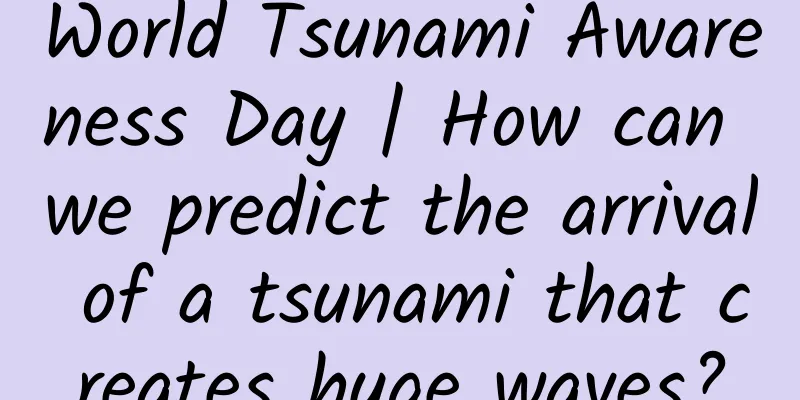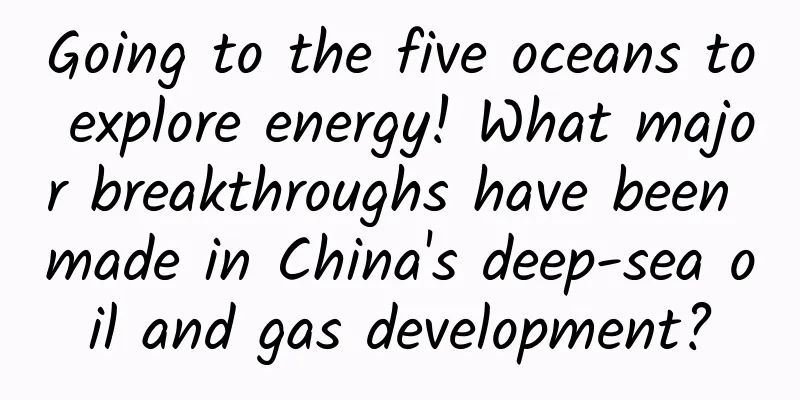World Tsunami Awareness Day | How can we predict the arrival of a tsunami that creates huge waves?

|
November 5th is World Tsunami Awareness Day. Today, we need to talk about this terrible "sea monster". 1 What is a tsunami? Tsunami is one of the most violent marine natural disasters in the world. It is a powerful destructive wave that can reach a height of more than ten meters or even dozens of meters, like a "water wall". This "water wall" contains huge energy and has a long wavelength, which can propagate for thousands of kilometers with little energy loss. Source: Tuchong Creative 2 Differences between tsunamis and storm surges Initially, special sea wave phenomena that could cause great damage were collectively called tsunamis, and were divided into earthquake tsunamis and meteorological tsunamis according to their causes. Earthquake tsunamis are not only caused by earthquakes. They can also be caused by submarine volcanic eruptions, underwater collapse and landslides, and impacts of meteorites or comets. However, since earthquakes cause more tsunamis and the consequences are often more serious, earthquake tsunamis are used as a general name. Meteorological tsunamis refer to abnormal tidal levels caused by rapid changes in air flow, air pressure, etc. However, since the 1970s and 1980s, due to the huge difference in the dynamics of meteorological tsunamis and earthquake tsunamis, people tend to use "storm surge" instead of meteorological tsunamis. In this way, tsunami has become the general name or abbreviation of earthquake tsunamis . Storm surge (Source: Tuchong Creative) Tsunamis are generally divided into two categories: (1) Offshore tsunami: The source of offshore tsunamis is within 200 kilometers of the coast, which poses a great threat to land. (2) Ocean tsunamis: Tsunamis that come from far away can also bring huge disasters to land. 3 How far is the tsunami from us? Tsunamis are certainly terrible, but how far are they from us? Let's look at them according to their classification. (1) Ocean tsunamis After reviewing the historical disaster documents over the past century, we can draw the following conclusion: the frequency of destructive earthquakes and tsunamis in China is extremely low. For example, many people still remember the Indian Ocean tsunami on December 26, 2004, which dealt a heavy blow to the people in Southeast Asia. However, the impact on the coastal areas of mainland China was a record of water increase of several centimeters to more than 20 centimeters. We can clearly find the reason from the map: in front of most of China's coastline, the "island chain" composed of the Indochina Peninsula, the Philippine Islands and the Japanese Archipelago just forms a line of defense against the "ocean tsunamis coming from afar". In addition, the coast of mainland China has a shallow continental shelf, which is characterized by being flat and extending far. If a tsunami wave enters this vast sea area, it will form a "shelf false tide" and its energy will be greatly depleted. By the time it reaches the coast, the sun is setting. (2) Offshore tsunami What about offshore tsunamis? The characteristics of my country's offshore are: shallow water and flat land. There is an important condition for the formation of a disastrous tsunami, that is, there must be enough water to be disturbed. Generally speaking, the water depth of the sea area must be more than 1,000 meters. Therefore, to put it in a figurative way, a disastrous tsunami is unlikely to "happen" at our "doorstep". Does this mean that we can rest easy in the face of tsunamis? Not entirely, for two reasons: (1) The eastern part of Taiwan is more susceptible to transoceanic tsunamis. In addition, there are also deep-sea slopes with poor stability, which may cause near-shore tsunamis. (2) The eastern part of the South China Sea is adjacent to the Manila Trench seismic zone, and there is a possibility of large-scale submarine landslides in some areas. But the good news is that our country's tsunami warning system has been established relatively completely. By utilizing the principle that earthquake waves propagate faster than tsunamis, we can gain time difference in issuing tsunami warnings. 4 The principle of tsunami warning: earthquake waves are faster than tsunamis! The physical basis of tsunami warning is that the propagation speed of earthquake longitudinal waves is about 6 to 7 km/s, which is 20 to 30 times the propagation speed of tsunami. Therefore, for more distant areas, earthquake waves will arrive tens of minutes or even hours earlier than tsunami. The time difference caused by the difference in propagation speed between the two is used for data integration and analysis, and the time and intensity of the tsunami reaching the coast are simulated and calculated. Satellite, remote sensing and other space technologies are used to monitor the progress of the tsunami's propagation in the sea. The forecast information is conveyed to the people in potential disaster-stricken areas in a timely and effective manner through the established communication network, and disaster prevention and mitigation science education and emergency drills are regularly carried out in potential disaster-stricken areas. This will enable effective pre-disaster response and reduce the losses caused by tsunamis. 5 Tsunami Emergency Tips Today is World Tsunami Awareness Day, and it is essential to master some tsunami emergency response knowledge. (1) Earthquakes are a natural warning signal for tsunamis. If you hear that an earthquake has occurred, a tsunami may follow. Do not stay on the coast at this time. (2) In addition, if you find that the sea water is abnormal and receding rapidly, it may mean that a tsunami is on the way. At this time, you should immediately go to a higher place to take shelter. (3) A tsunami is a series of waves, and the first wave may not be the most dangerous. The danger of a tsunami will continue for several hours after the first wave reaches the coast. Therefore, when encountering a tsunami, people should stay away from the danger zone until they hear that it is safe. Source: Science Popularization China, National Geographic China, Institute of Geology and Geophysics, Chinese Academy of Sciences, etc. |
<<: Science illustration | Adventures at the CIIE! These high-tech products are so cool
Recommend
Commonly rejected advertising materials and coping skills!
In daily work, I often hear the cries of operatio...
To eat this delicious mushroom, you may need to go to the desert to dig sand
Recently, there is a video that has been going vi...
There are pitfalls when it comes to selling products with influencers!
Not all live streaming sales by internet celebrit...
Zen and the Art of Objective-C Programming: Exploring Zen Cultivation from Writing Details
[[140326]] Preface We started writing this book i...
How much does it cost to customize Dehong furniture through the mini program? What is the price quote for Dehong Furniture Mini Program customization?
There are two types of customization of Dehong Fu...
Can an “anti-inflammatory diet” really improve immunity?
This is the 4274th article of Da Yi Xiao Hu Recen...
[Smart Farmers] Omnivorous "Big Eater" - Beet Armyworm
In recent years, as people's demand for the q...
Apple iOS 15 Messages App has a bug that causes saved photos to be deleted
September 30 News Messages is a feature update la...
A 4.5-magnitude earthquake occurred in Dongyuan County, Heyuan City, Guangdong! Learn the basic principles of emergency earthquake avoidance quickly
According to the official measurement of the Chin...
When will the money be returned after returning goods on Pinduoduo? What is the refund process?
Many netizens like to shop on the Pinduoduo platf...
What language is used to develop WeChat mini programs? What languages are needed to create WeChat mini programs?
Q: What language is used to develop WeChat mini p...
Microsoft Office 2016 creates mobile office solutions for large and medium-sized enterprises!
Over the past few decades, Microsoft's Window...
Chengdu New Tea Website, the best place to drink tea
Reservation arrangements on the Chengdu New Tea w...
Analysis of Tik Tok Media Advertising in Q4 2019
The short video industry still has great potentia...
World Kidney Day丨Do you really understand your kidneys?
March 10th is World Kidney Day It is reported tha...






![Ahua Pet Group Training July 2021 iPad Illustration Course [HD with Brush Materials]](/upload/images/67cc2735a7a14.webp)


